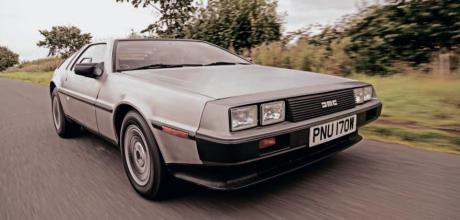1981 DeLorean DMC-12
John DeLorean’s bid to make a car in his own image famously ended badly,but has history painted the DMC-12 unfairly? We drive one and find out.
Driven: DELOREAN DMC-12
Sentiment is rarely the best lens through which to view anything but, if your formative years were the 1980s, the DeLorean matters. It isn’t just a car, it’s a cultural touchstone. All of which is brought into sharp relief on becoming acquainted with the 1981 example pictured here. Its outsized reputation precedes it, a point rammed home by the response from other road users. That, and pedestrians. This is patently not a car for the shy or retiring, but reaction is overwhelmingly positive. In many ways, and on many levels, it’s the compelling backstory that makes it so, well, compelling.
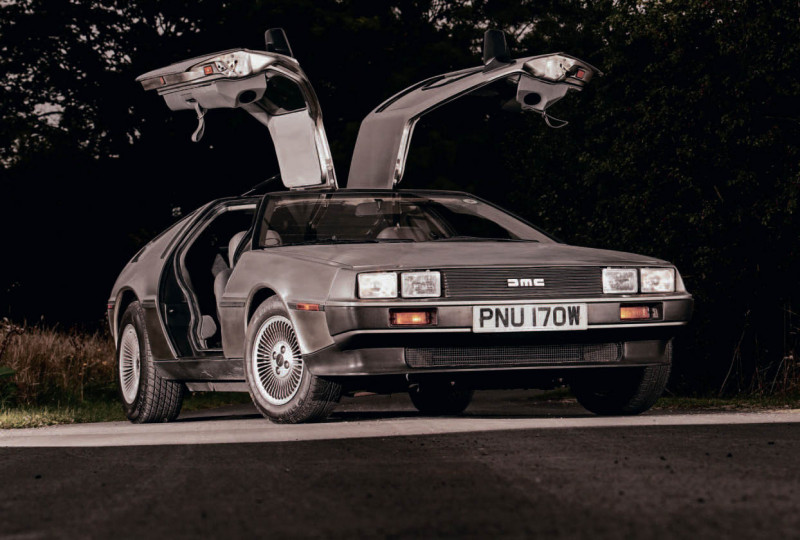
“HERE WAS A CAR WITH A NOVEL METHOD OF CONSTRUCTION, STRIKING LOOKS AND GULLWING DOORS. THERE WAS EVEN A WAITING LIST, WITH PUNTERS WILLING TO PAY OVER THE ODDS TO LAND ONE.”
It’s a yarn for the ages, that’s for sure; one where genius and hubris were intertwined. John Zachary DeLorean was either a huckster or a virtuoso depending on whose opinion you canvas. His achievements at General Motors prior to going it alone are legendary. He was a ‘car guy’ at a time when that wasn’t necessarily considered a good thing within the halls of power at the biggest of Detroit’s Big Three. He acted as midwife to the Pontiac GTO which ushered in the muscle car movement, which saw every other mainstream producer scrabbling to catch up. As such, his name carried a certain cachet, which in many ways was rooted in a myth of his own and others’ creation. Becoming a motor mogul was the next logical step for a man with steelplated self-belief.
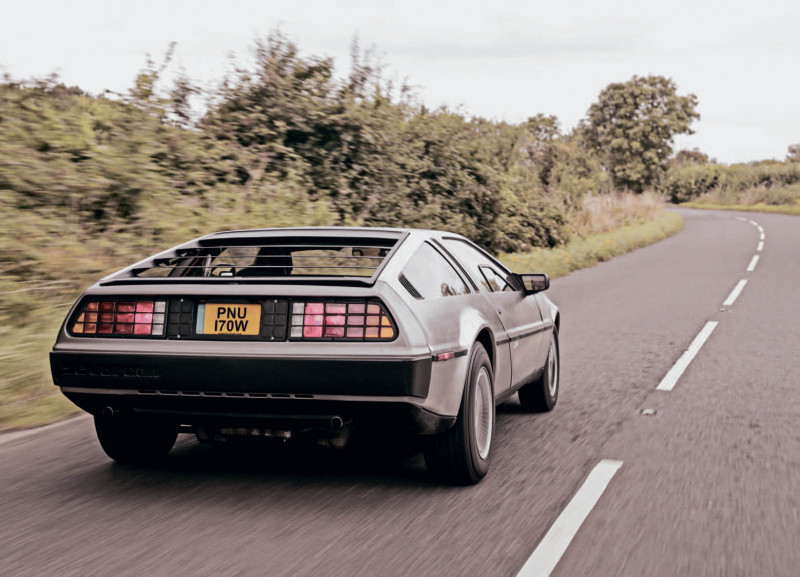
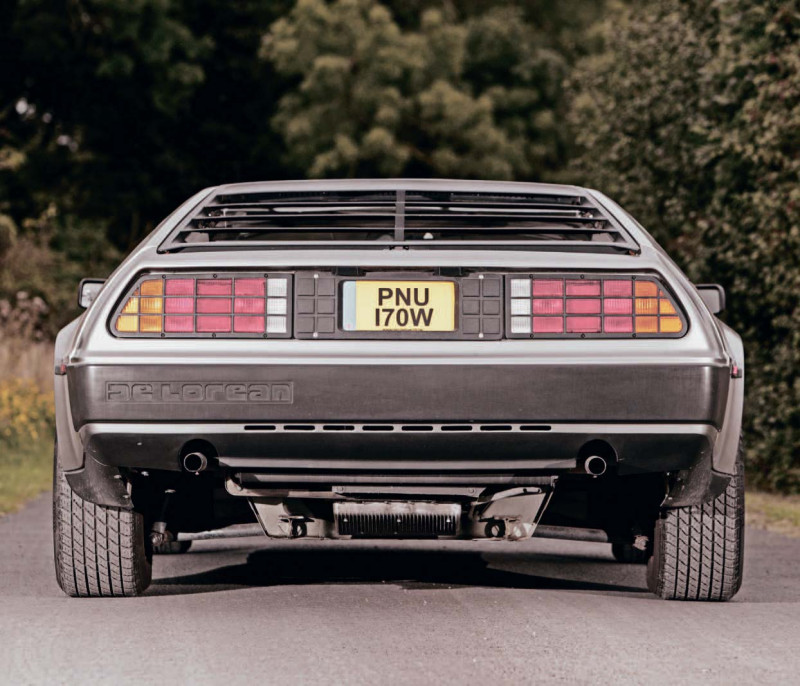
The car that eventually bore his name similarly exists in a netherworld between the actual and the apocryphal. It is to be expected given that this upstart start-up operation made only the one model prior to flaming out in the most public – most notorious — way imaginable. Given the infamy that trailed its instigator in later years, and the DMC-12’s emergence as a pop culture icon following its starring role in the smash hit Back to the Future trilogy, it’s easy to overlook its worth as an actual car. The thing is, it had – and has – an awful lot going for it. More than you might imagine.
How and why DeLorean set up on his own has been recounted ad infinitum, but the first prototype to bear his name appeared in October 1976. It was fashioned by fellow Pontiac alumnus, William T. Collins. Initially, what in time became known as the DMC-12 was to have featured a mid-mounted Wankel rotary engine. Thereafter, the Ford ‘Cologne’ V6 was mooted before DeLorean finally settled on the PRV ‘Douvrin’ unit. What’s more, the chassis for this brave new world was to be made from a new and unproven manufacturing process called ERM (Elastic Reservoir Moulding). DeLorean just happened to own the patent, but this was found to be unsuitable for volume manufacture.
Moving the narrative forward, the car ultimately ended up being reengineered by Lotus, bodied in stainless steel, and styled by Giorgetto Giugiaro. In 1978, the British government sunk £53m into the scheme (almost as much as Chrysler UK had received for a controversial ‘rescue’ plan). A manufacturing and test facility was established in Dunmurry, Northern Ireland at the height of The Troubles, with series manufacture finally starting in January 1981. By December of the following year, it was all over after around 9200 cars had been made.
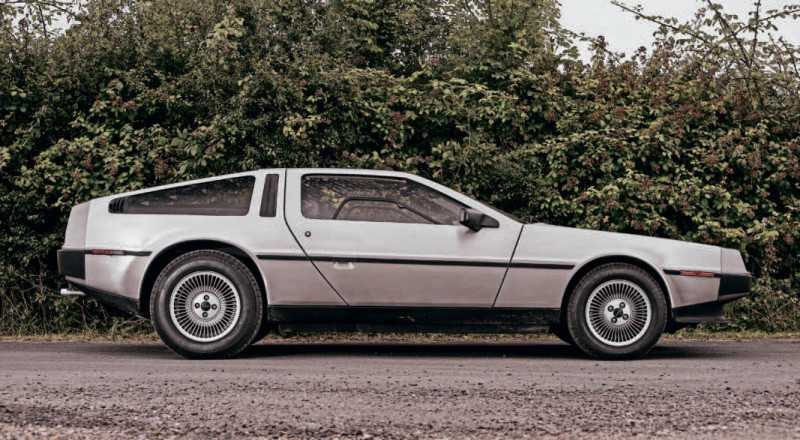
John DeLorean had been arrested on drugs charges only a few months earlier, but was (much) later acquitted because he was deemed to have been entrapped by the FBI. He hadn’t planned on actually profiting from the sale of ‘nasal party favours’. It later transpired that a great deal of tax payers’ money had disappeared into a wormhole, with Group Lotus’ finance director Fred Bushell being the only person ever to serve time in the Big House over the scandal. Some say he took the fall for Colin Chapman who had died in December 1982. Others pointedly point out that this is something of an oversimplification given their collective financial malfeasance.
But what of the car? It’s easy to forget the hoopla surrounding the DMC-12 long before it entered production. Think back to 1 December 1980, when pilot production began and DeLorean had already attracted 350 dealers, all of whom had money invested in the venture. There was pent-up demand in its intended marketplace: North America. Here was a car with a novel method of construction, striking looks and gullwing doors. There was even a waiting list, with punters willing to pay over the odds to land one. It’s just that its launch was followed almost immediately by a slump in the American economy. Demand ebbed, which, allied to a raft of other problems closer to home, ensured that the adventure was over long before the DMC-12 got into its stride.
Even now, the DMC-12 hasn’t lost the power to enthral. The outline by Giorgetto Giugiaro is neatly proportioned, the gullwing doors serving to add a sense of the theatrical. Giugiaro, who freely admits that he did his best to talk his paymaster into going with a more conventional set-up, has acknowledged that they lend it an air of the exotic (he called John DeLorean ‘Mr Hollywood’). What’s more, the end result looked remarkably like his original renderings. That said, he wasn’t above borrowing from his back catalogue, the car’s frontal styling treatment borrowing heavily from his prior Maserati Medici II concept queen.
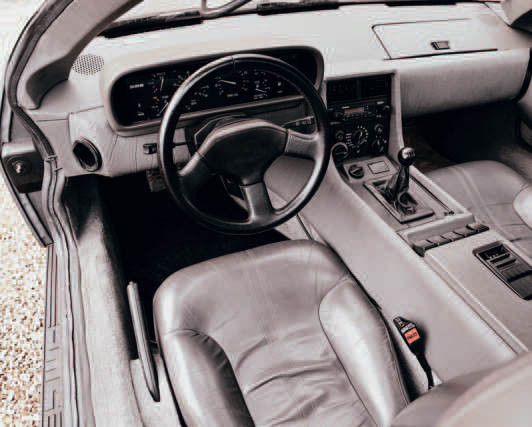
Nor could you describe the car as being of the ‘origami’ school. Not really. It isn’t all geometric shapes and serrated edges, nor is it a proper wedge. There are curves here, it’s just that they are of the subtle variety. What photographs don’t do is lend a sense of scale. In your mind’s eye, the DeLorean isn’t a particularly small car when viewed alongside its contemporaries. However, this impression is illusory or, at the very least, deceptive: it’s 25.5mm shorter than a comparable Porsche 911SC, but, more significantly, 228mm lower. However, the front track is 203mm wider than that of the German car, the rear 229mm. As such, it appears squat and purposeful.
If anything, you could argue that the car’s signature unpainted finish was its biggest curse. It may be rust resistant, but stainless steel shows up every blemish; fingerprints in particular because people cannot resist touching. It also ensured that any DMC-12 looked much the same as any other. What price individuality? However, it’s worth pointing out that DeLorean intended to produce a car without a shelf life: the stainless steel body wasn’t just for show because it carried a 25-year warranty. That was unheard of then and, well, it still is.
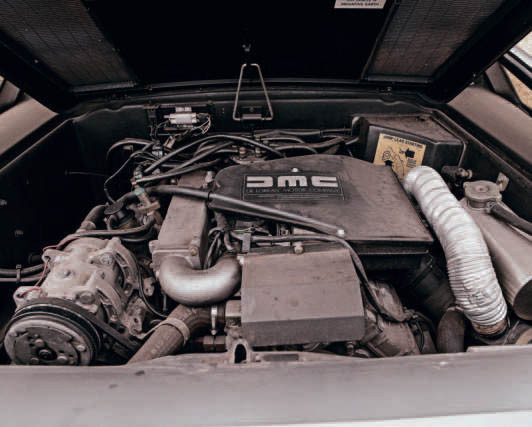
Then there are the gullwing doors, a feature which never ceases to invoke the inner child in you. They open easily enough without much heft. Having threaded your way inside, pull-straps make it easy to haul them down again. You sit low relative to the window line, but the cabin feels more spacious than many mid-engined sports cars of the day, and it has better ergonomics than the vast majority (that really isn’t much of a compliment). Nevertheless, it still feels a mite claustrophobic. There is plenty of fore-and-aft seat movement, mind, but even with the part-reclined attitude there is a paucity of headroom.
The controls are neatly laid out, the instrument binnacle being similar in appearance to those found in contemporary BMWs, while the pedals are not offset into the passenger footwell as in so many mid-engined ‘exotics’ from way back. They are well spaced and there is even a rest for your left foot to clear the clutch. One thing that is conspicuously absent, though, is a sense of quality. It is no way worse than many comparable cars, but nothing about it screams ‘premium,’ more ‘parts bin.’ That is certainly true of most, if not all, cars of this ilk, not to mention anything made in Sant’Agata or Maranello 40 years ago, but here it’s that bit more… pervasive.
Having said which, the sense of occasion when driving a DeLorean never fades. Moving away from rest, one thing strikes you immediately: you may be highly visible from the outside, but visibility from within the cabin is compromised although, to be fair, it’s better than in some mid-engined sports cars we can think of (the Lotus Esprit springs to mind). The steering also manages to be heavy and devoid of feel at low speeds but, once at a trundle it comes alive. There is no power assistance, what with it having a rear-engined layout, the steering becoming appreciably lighter and meaty with it. As with any low-slung car, the impression of speed builds quickly, even if you’re not actually travelling that fast.
The unvarnished truth is, the DeLorean doesn’t have the pace to back up its racy looks. The DMC-12 was mechanically unadventurous, the single-overheadcam, 2849cc V6 slung out back being happier in the front of a flagship Renault, Peugeot, Citroën or Volvo. The press material quoted a 0-60mph time of 7.5-seconds with the manual five-speed transaxle (rather than the optional three-speed auto ’box), but this seems optimistic at best. In Federalised form, it produced bhp at 5500rpm, and 156bhp at 5700rpm minus the smog equipment as here. Either way, it wasn’t a massive amount of horsepower to shift 1290kg. It’s just a shame that the planned turbo variant never came online, much of the development work having been completed by the time the Government finally ended play.
The gearbox is a bit gristly, but it would be hard to miss a shift. It’s markedly better when moving up the gears than on the way down. Lacking from the car’s repertoire is a sense of drama. Many cars with the engine sited at the rear can be ‘lively’ when pressed. Driven with enthusiasm, but a long way south of ten-tenths, the DeLorean feels more resolved than contemporaries such as the Alpine-Renault A310 which provided the benchmark during development (it also shared the same powerplant). There’s quite a large mass of engine behind the rear axle, and it would be inadvisable to throw the car around with abandon, but it corners keenly with mild understeer. It also grips well by standards of the day.
What stops it short from being great rather than merely good is the soft suspension which is tuned to be more boulevardier than deftly involving. That is to be expected given its target market, the payoff for a compliant ride being a sense that it isn’t ‘focused’ (as latter-day words monkeys have taken to describing anything that isn’t razor sharp handling-wise). It isn’t a car for bombing B-roads, then, but it is… nice. There’s a lot to like, not least the brakes which bring the car to a halt cleanly and efficiently, without the lock-up shenanigans you often get with rear- and mid-engined cars of this vintage, particularly in the wet.
The really sad thing about the whole DeLorean saga was that so much hope was invested in the outcome, not least for the workforce in Belfast. There was so much potential for great things here, not least at a humanist level. As for the car itself, it was good but with the potential to have been so much more. With further development, certainly with more power and improved build quality, the DMC-12 could have been up there with the best of them. Yes, really. As it stands, the DeLorean name will forever be synonymous with scandal, drugs, and a bunch of films about time travel. In many ways, that beats rank ordinariness any day of the week.
Thanks to: Max Weitzmann jhwclassics.com and Chris Williams of the DeLorean Owners’ Club deloreans.co.uk
THE INSIDE VIEW
The association of Lotus and DeLorean wasn’t without its casualties, not least the reputation of the former’s talismanic founder, Colin Chapman. His great friend and right-hand man Mike Kimberley recalls: “In 1978, Colin was invited to fly to Arizona to test a prototype DeLorean and he asked me to go with him. There was clearly a misunderstanding as to how representative of a finished product the prototype was that was due to be tested by us in Phoenix. The upshot was that we went out there and it was not a good experience for anyone. I produced a heavily redacted report which I heard later the DMC guys apparently called War and Peace. Group Lotus then landed the contract to engineer and develop what became the DeLorean production car.”
Much ink has been spilled over John DeLorean’s fall from grace, Chapman’s name also being tainted. This remains a sore subject for Kimberley. “Everyone was so negative about the project after DMC was forced to close. Nobody ever writes about the fact that a hundred percent new car was engineered from scratch and brought to market in just 28 months by the Lotus and DeLorean teams working 24-seven in Belfast, Coventry and Hethel. During this time, a greenfield factory and test track were also constructed, staff trained, and cars certified for the US market. Some folk were keen to criticise, but the car was popular when it came out in 1981. It did sell initially. Unfortunately, its launch coincided with another fuel crisis and a major downturn in the US and world economies.
“As for Colin’s involvement with DeLorean… How can I put this? Colin was my boss. He then became my mentor and friend. He was no saint, and he could be hard if necessary when it came to difficult business decisions. I never viewed him as being anything other than an inspirational and charismatic figure, though, and one who was driven to compete at only one speed: flat out! DeLorean, by contrast, was a polished, suave big car company guy who was heavily into personal PR. Colin radiated energy and enthusiasm and was just the opposite. He didn’t seek the limelight. In fact, he would often delegate PR roles to me. It continues to annoy me that people still criticise Colin. I was very disappointed and sad about what happened, but it doesn’t diminish from what he achieved during his lifetime.”
“THE OUTLINE BY GIORGETTO GIUGIARO IS NEATLY PROPORTIONED, THE GULLWING DOORS SERVING TO ADD A SENSE OF THE THEATRICAL.”


